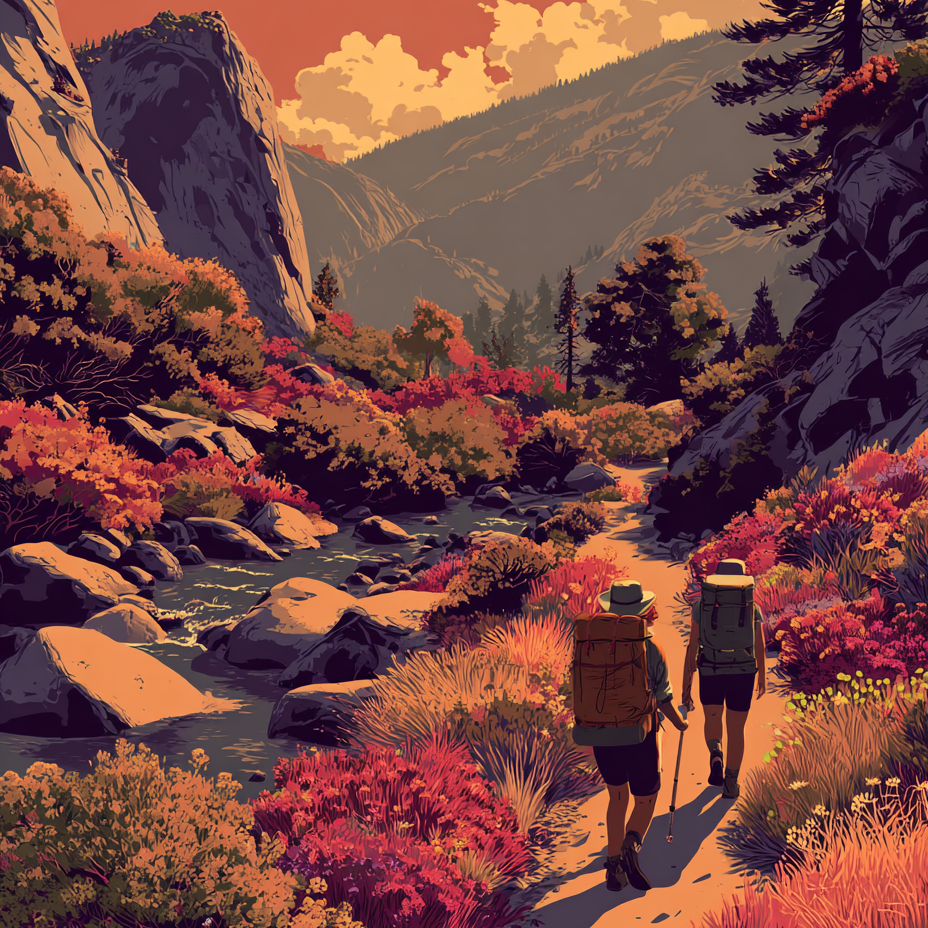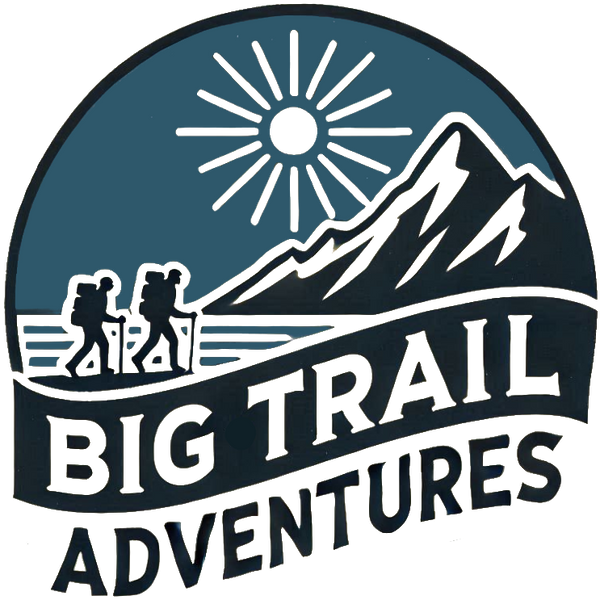
Walking the John Muir Trail with Ally Beaven
Share
This summer, writer and ultra runner Ally Beaven walked the John Muir Trail — 340 km through California’s Sierra Nevada, from Yosemite Valley to the summit of Mount Whitney. We talk about what drew him there, how it felt to share the trail with his partner Karen, the planning it takes for a two-week trip, resupply quirks, bears, and why the JMT’s wildness is unlike anything in Europe.
What is the John Muir Trail?
“The JMT is roughly 340 kilometres through the Sierras in California. It starts in Yosemite Valley in the north and finishes on the summit of Mount Whitney in the south — or the other way round if you prefer.
“What makes it stand out for me is the continuity of wilderness. You could walk the whole thing without stepping on a road or going inside a building. You get to the top of these passes and, apart from a narrow trail wiggling into the distance, you’re looking at a landscape that feels much like John Muir would have seen.”
“Anyone with even a hint of interest in being outside should go and do the JMT.”
Why the JMT (and not a whole summer on the PCT)?
“The Pacific Crest Trail is the big one, but we only had two weeks and didn’t want to quit jobs to do it. The JMT overlaps the PCT and gives you that taste of big-country wilderness without needing an entire season.
“We’d tossed around other ideas — maybe the Colorado Trail by bike — but backpacking is less faff for travel. The permit system on the JMT also helps you commit: once you’ve got a start date, you book flights and make it real.”
Planning, permits and timing
“It’s admin-heavy because it’s remote: permits, resupply, food, and bear-can rules.
“Heading north to south worked for us. The Yosemite permit lottery opens about 24 weeks ahead, you apply for specific trailheads, and if you land one you confirm and go. Flexibility helps. If you don’t get the classic Happy Isles start, Tuolumne Meadows (Lyell Canyon) also works — and you can still stitch together the full experience.
“Snow varies a lot by snowpack and season. Snow-free is easier; otherwise you carry more kit, move slower, and eat through more food.”
Daily rhythm and terrain
“We averaged about 30 km a day. It isn’t brutally steep compared with some Alpine routes. Often you follow a long valley to a single high pass each day — sometimes a 25 km mellow climb rather than endless steep ups and downs.
“Camps are dictated by the passes and weather. We tried to be over the pass by lunchtime to avoid afternoon thunderstorms, camp lower (not on a boulder field at 3,500 m), and then enjoy a long descent.”
How it feels compared with Europe
“The scale is bigger and the human footprint smaller. In the Alps, you pop over a pass and there’s a lift or piste. On the JMT, you crest a pass and it’s just lakes, granite, and silence.”
Sharing the trail with a partner
“We fell into a routine. We pitched the tent together; I usually cooked; Karen set up the ‘boudoir’ — mats and sleeping bags. She also had a genius habit of digging the next morning’s catholes the night before, which is a luxury when the coffee kicks in.
“You imagine the wilderness will make you a different person, but you’re still you out there — same quirks, just a better view.”
Wildlife highlights
“We really wanted to see a black bear, and on day 11 one wandered out of the trees about 60 metres away — perfect: close enough to see its face, not close enough to chew ours. Beyond that, tons of marmots, pika, birds, lizards, and anglers fishing their way along the trail.”
Resupply, bear cans, and pack weight
“We used Muir Trail Ranch and Vermilion Valley Resort for resupply. Because international shipping is unpredictable, we used a US trail-outfitter service to pack and send food to MTR in the required bear-proof canister-friendly format.
“The bear can is the limiter. We were total newbies and discovered they’re smaller than you think. Expect an hour of repacking, squeezing air from bags, and standing on the lid to get it closed.
“Pack weight was about 8 kg without food (plus the bear can). After MTR we carried six nights of food — the heaviest our packs got. Hiker boxes make the system work: you drop what you can’t carry; someone else is delighted to find it.”
Hardest moment and mindset
“We went in determined not to be those people in paradise, crying because their feet hurt. Mostly, we succeeded. The worst patch was a day when Karen’s shoes were a half-size too small and her feet were wrecked. We considered exit options, but lunch helps — and then we saw a bear, which takes your mind off things.
“The goal was savouring, not suffering. It’s a trip to enjoy, not endure.”
What the trail gave back
“Two solid weeks away from phones and email is priceless. We slept with the tent doors open every night, went to bed at dark, got up at light, coffee, pre-dug cathole, walk all day. I could live like that for months and not get bored. If anything, it made me more keen on eventually doing the PCT.”
Practical tips for your JMT
-
Be flexible with dates and start points — it improves your permit odds.
-
Aim to be over the pass by lunchtime; plan camps accordingly.
-
Treat the bear can as your packing constraint from day one.
-
Consider a US-based resupply service if you’re flying in.
-
Don’t stress about the “perfect” JMT — any few weeks in the Sierras will be unforgettable.
